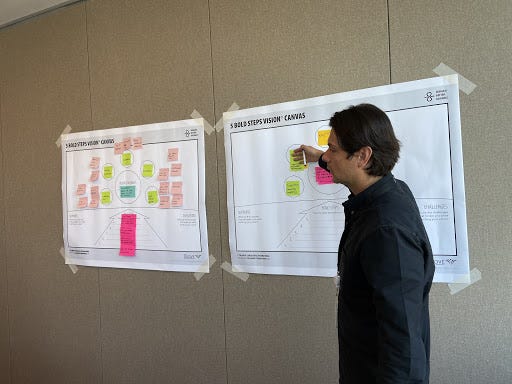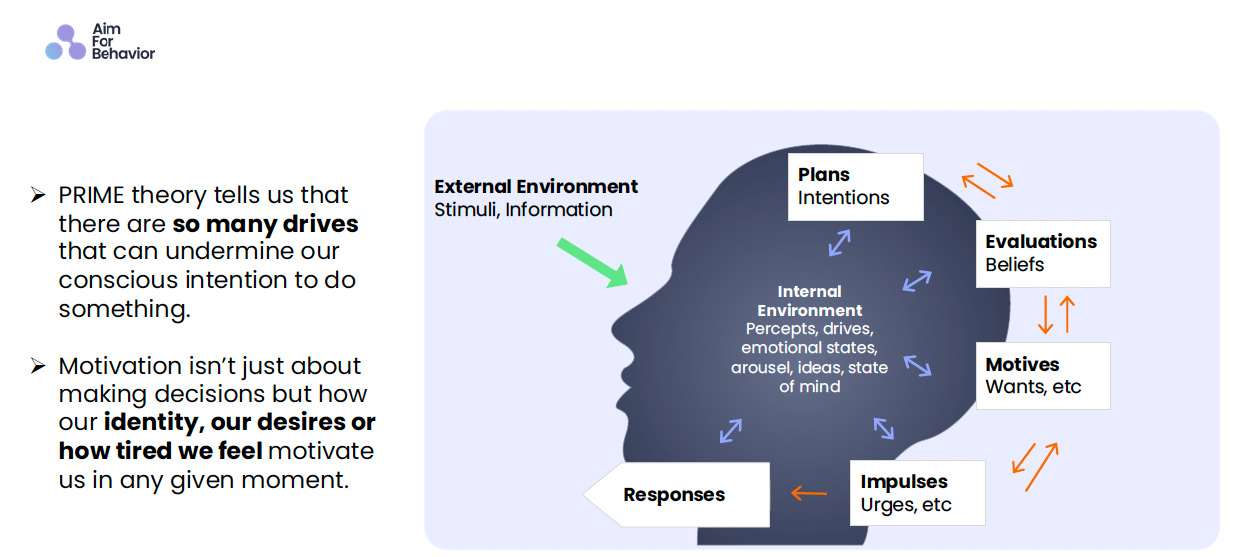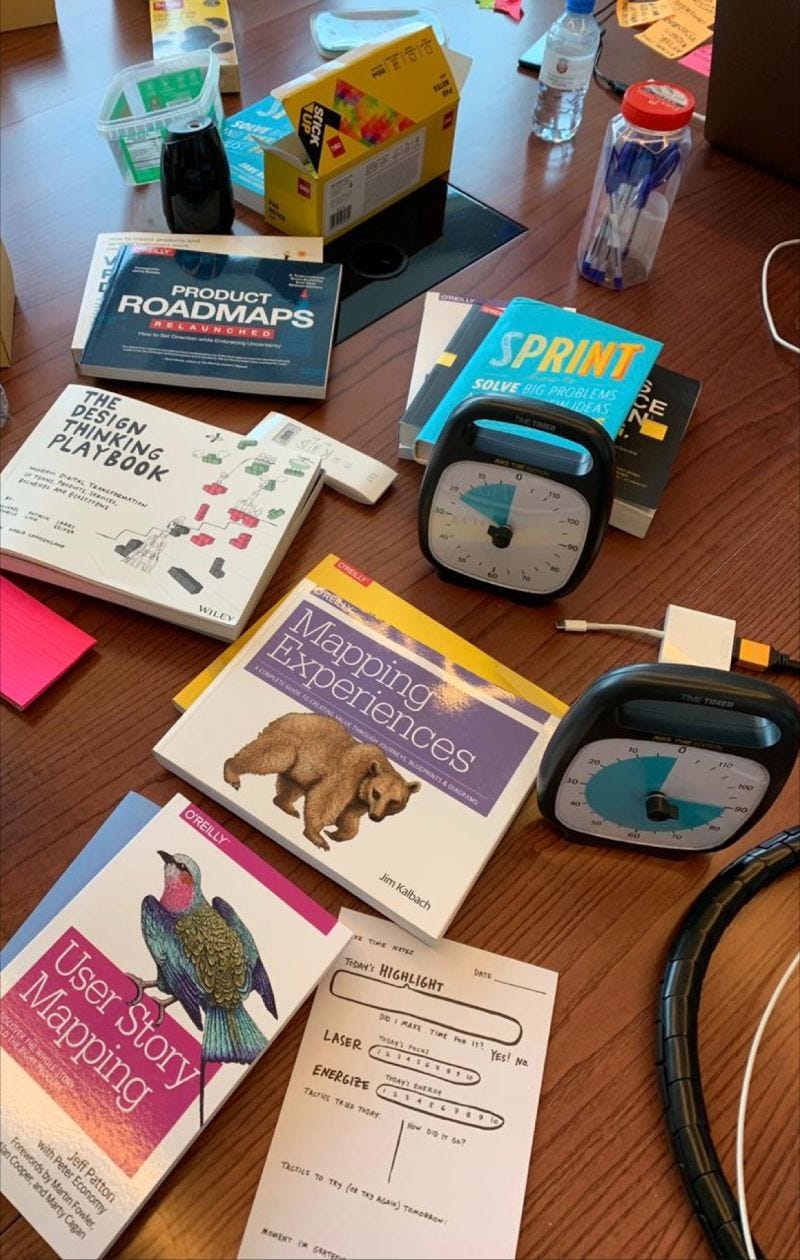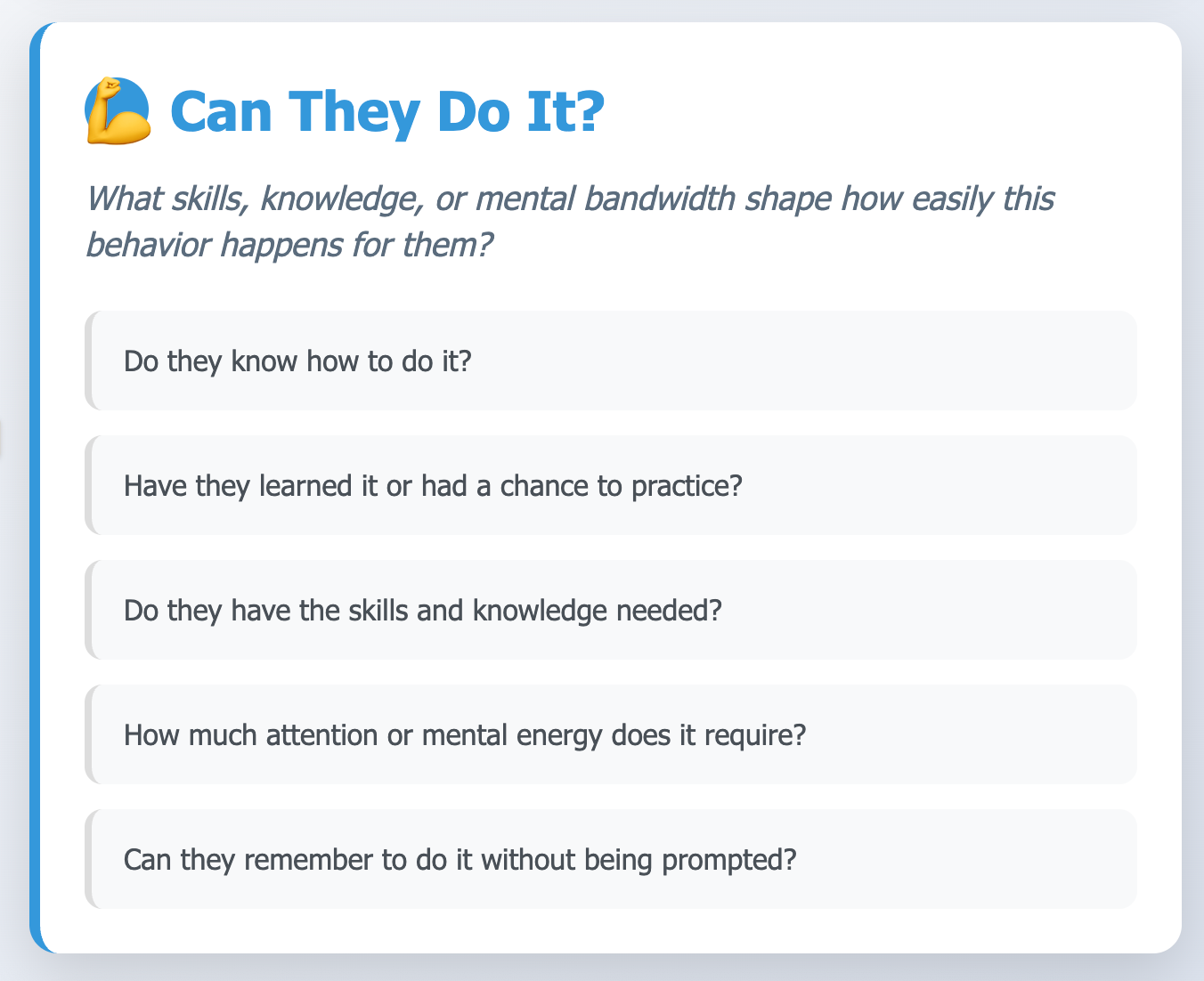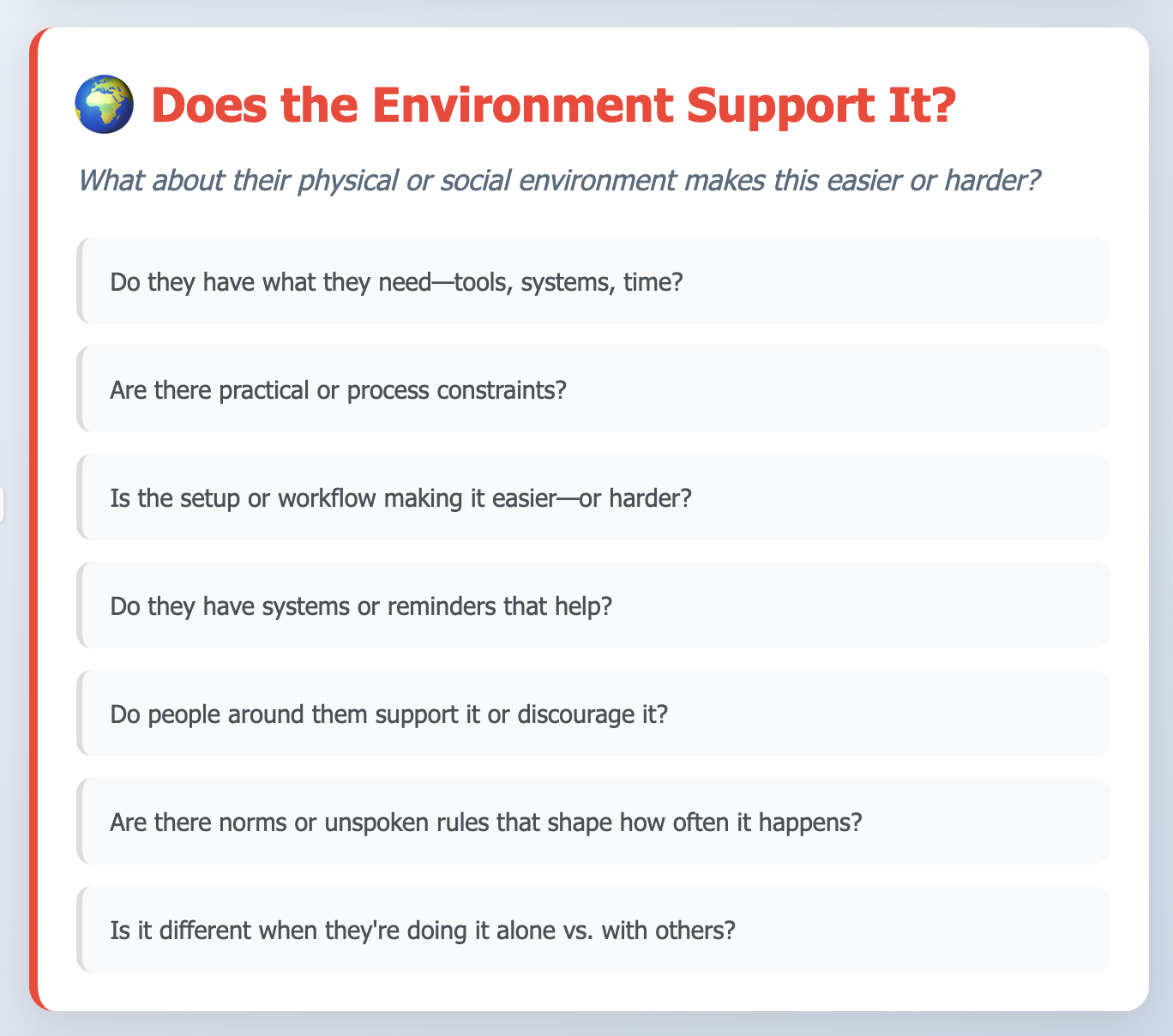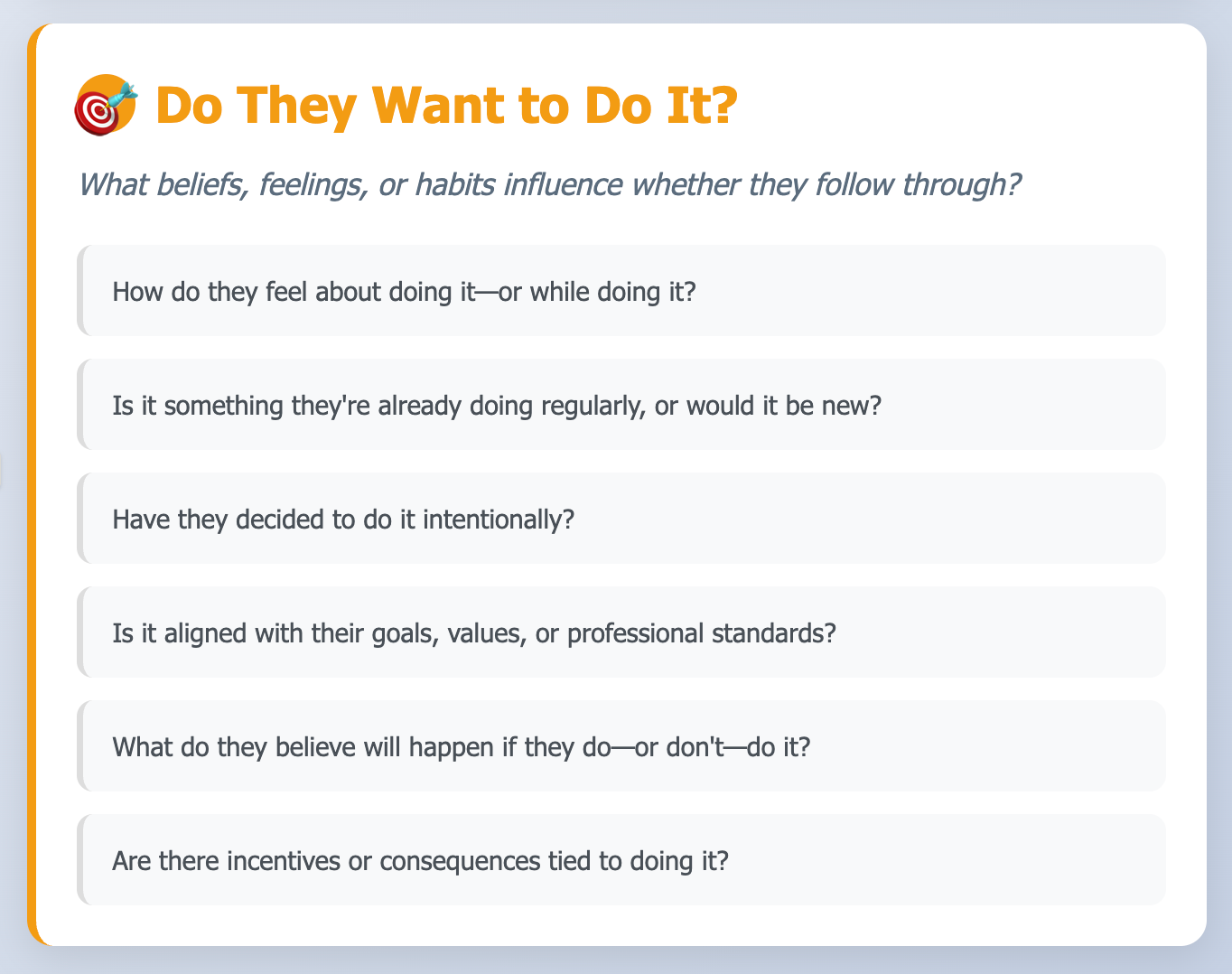The hidden reason why change ideas get ignored (with workshop to fix it)
Years ago, I set up an innovation lab that was supposed to break things and move fast.
We had the startup aesthetic down cold, the whiteboards everywhere, sticky notes in every color. We bought the fanciest software, ran design sprints, delivered some genuinely good customer experiences.
But here's what I didn't expect: we were succeeding and failing at the same time.
The lab was hitting metrics, our business owners and customers liked what we built, and leadership was happy with our output.
Yet I could feel something was wrong.
My real goal wasn't just to build good experiences, it was to change how the organization worked. I wanted to get others involved, enable them to make better decisions, and ultimately make the lab and myself redundant.
That didn't happen. Not even close….
While we were "innovating" in our beautiful bubble, the rest of the organization kept working exactly as they always had. Our fancy processes stayed in our fancy room.
The behavioral patterns that created the need for an innovation lab in the first place?
Completely untouched.
In my search to understand what happened...
I started investing more of my time to truly understanding people, psychology, decision making and ultimately applying behavioral science in my work (and life), which is what led me to start my consultancy Aim For Behavior.
These are 3 lessons I learned (by no means the only ones):
1. Intrinsic motivation beats startup aesthetics
You can make the rooms in organizations as "startupy" as you want, and buy the fanciest software, however, if the people aren't more intrinsically motivated to new ways of working, it won't in the end drive the change you are looking for.
Tip: Know where your colleagues are in the motivation continuum, and go from there.
I had assumed that creating an appealing environment and demonstrating better outcomes would naturally motivate adoption. What I learned is that motivation is way more complex.
Some people were genuinely curious about our methods. Others felt threatened. Still others were simply too overwhelmed to take on anything new, no matter how beneficial. (If I only knew then, what I know know about the drivers
2. Understand the real outcomes/needs of the employees
What "job" are they trying to get done, how do they do it today, in what context.
Tip: Don't impose your solutions on them, because you think they are better, as you probably don't know enough.
Just because people don't adopt what you make, doesn't mean they are wrong in doing so, you have probably missed something.
Our design sprints felt inefficient to people already behind on deliverables. and looked chaotic to managers who needed predictable timelines.
We were solving problems that mattered to us, not problems that mattered to them. (or at least this is not what they understood or believed.)
3. Design with behavior in mind
To help enable people to make better choices, you have to understand what they are doing today, what behaviors matter, and what is stopping them.
At work, it might be skills or knowledge, or it could be a lack of time, resources, or lack of confidence in doing something.
If you don't know, you won't address the right barriers, and your solutions will fall flat.
Tip: Build logically to connect actors, context, system, behaviors, barriers, and solutions.
So I built a diagnostic workshop to help you diagnose behaviroal friction and take action
Although my above experience is about how things change in an organization, you can adapt this to other settings - just like we have at my consultancy for our clients.
Behavioral friction can manifest in many ways:
Clinicians who won't use the new decision-making tool.
Employees who ignore the AI insights.
Staff who skip feedback sessions.
Citizens who don't show up for screenings.
The usual response? "They just need more training." Or "They're not motivated."
But usually the real barriers are hiding in places you haven't looked?
Instead of guessing why adoption is low in your organization, here's a simple 75-90 minute workshop that maps the real friction across three areas*:
Do they actually know how to do it?
Does their environment make it possible?
Do they want to do it ?
*Based on the COM-B model (Michie and colleagues), adapted for real-world planning.
What you'll need:
A clear behavior you want to target
Sticky notes
A wall or shared online canvas like Miro with two zones: "Helps" and "Gets in the Way"
Someone to facilitate
The Workshop:
Step 1: Define the Behavior (10 minutes)
Pick one real behavior you want to understand and improve. Write it clearly so everyone can see it.
Examples:
"Clinicians use shared decision-making tools during patient consultations"
"Employees apply AI-generated insights to client recommendations each week"
"Staff participate in monthly team feedback sessions"
Step 2: Introduce the Three Areas (5 minutes)
Explain: "We'll explore this behavior from three angles: what people are capable of , what their environment makes possible, and what drives or blocks their action."
Step 3: Work Through Each Area (45–60 minutes)
For each section (15–20 minutes each), use these prompts:
Can They Do It?
Do they know how to do it?
Have they learned it or had a chance to practice?
Do they have the skills and knowledge needed?
How easy or difficult is it for them physically or mentally?
How much attention or mental energy does it require?
Can they remember to do it without being prompted?
Does the Environment Support It?
Do they have what they need: tools, systems, time?
Are there practical or process constraints?
Is the setup or workflow making it easier, or harder?
Do they have systems or reminders that help?
Do people around them support it or discourage it?
Are there norms or unspoken rules that shape how often it happens?
Is it different when they're doing it alone vs. with others?
A Note: Doing this part of the diagnosis, will also help you understand what levers you have for change in the organization, and where you can and can’t influence. This can help you discuss with your stakeholders and see if you can have them help you unlock these to achieve change.
Do They Want to Do It?
How do they feel about doing it, or while doing it?
Is it something they're already doing regularly, or would it be new?
Have they decided to do it intentionally?
Is it aligned with their goals, values, or professional standards?
What do they believe will happen if they do - or don't - do it?
Are there incentives or consequences tied to doing it?
For each prompt, ask participants to reflect on what they know about the audience and write insights on sticky notes (1 idea per note). Place them under either "Helps" or "Gets in the Way."
Step 4: Spot Patterns (15 minutes)
Once all prompts are explored, group related notes by theme and look for:
Skill gaps (they don't know how)
System barriers (tools, time, or process blocks)
Social friction (conflicting norms or roles)
Motivation mismatches (conflicting beliefs, low perceived value, unclear relevance)
Circle areas where blockers cluster heavily. Mark potential quick wins (easy fixes that could remove friction).
Optional Step 5: Sketch Change Ideas (10 minutes)
Ask: "What's one small experiment we could run to shift this?" Or, "What would a systems-level fix look like here?", here too you will need to use a bit of science and art to ensure you are matching evidence based solutions to the right barriers.
What this actually reveals
When you run this diagnostic, you'll stop making assumptions about why people aren't changing and start seeing the real barriers.
You might discover that your brilliant new process requires three different logins during the busiest part of someone's day.
Or that the "resistance" you're seeing is actually people protecting their ability to serve customers well.
Or that the behavior you want requires skills nobody has had a chance to develop.
These insights change everything about how you design solutions.
Ultimately:
Think less in solutions and more in outcomes.
Think less in technology and more in psychology.
Think less in terms of "fixing people" and more in enabling them to succeed.
Have you noticed behavioral friction in your work? What patterns are you seeing? Hit reply and tell me about it, I'd love to hear what you discover.
I’m Robert Meza the founder of a behavior change consultancy called Aim For Behavior. We help drive change for transformation, product, and marketing teams and help them remove barriers slowing adoption, execution, and engagement.
Have a great day, Robert



